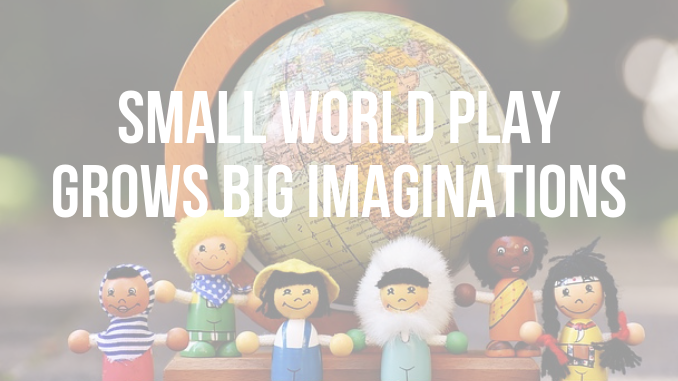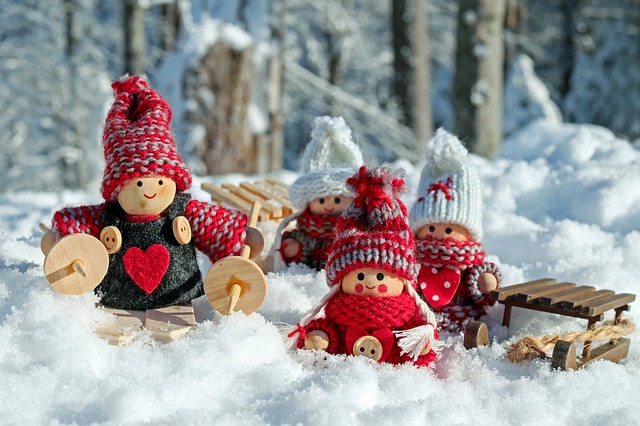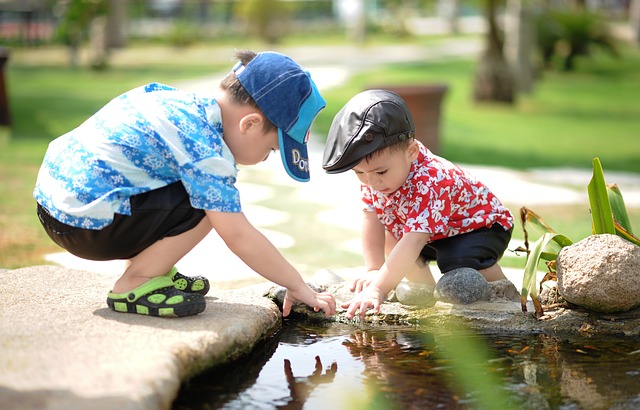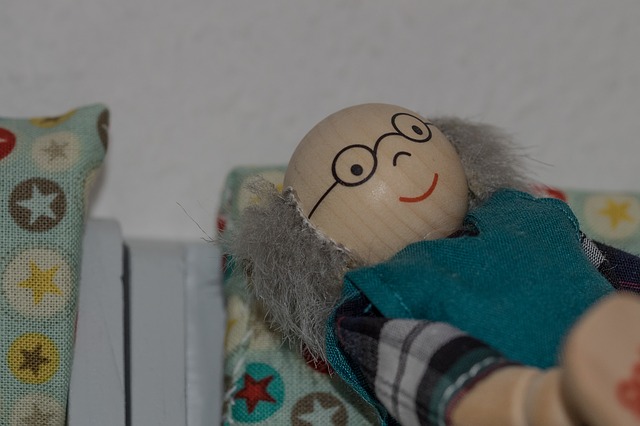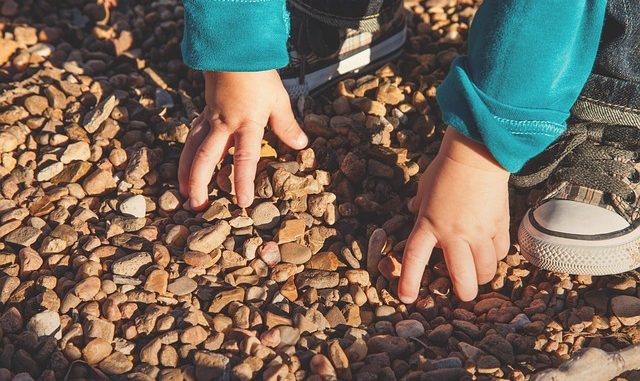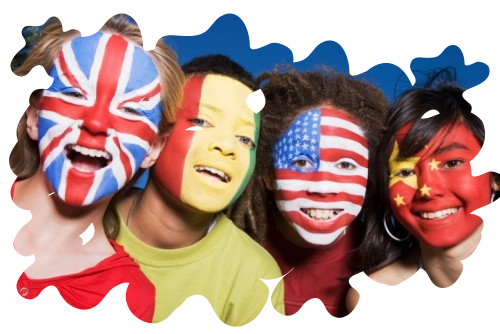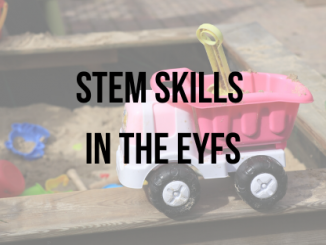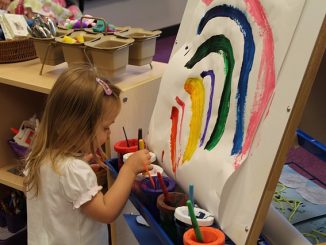‘Small World Play’ isn’t a term that is widely understood outside of the Early Years sector, but it simply means imaginative play with small toys or resources.
Early years settings are extremely busy, with lots of new and exciting activities and initiatives going on, and it can be easy for small world play to fall by the wayside as it is a long-standing staple part of settings, rather than something new or exciting.
However, small world play has many benefits to children’s development and can be made new and exciting with just a few tweaks!
Understanding the world
Small world play lets children experiment with how things happen, and why things work; rolling cars down slopes, building different structures and experimenting through play with how the world works. For example, children might create a vet, supermarket or fire station and act out how these places work with small world figures and vehicles. This requires them to think through the function of these buildings and postulate how parts of a town might work and fit together. All of this begins to build an understanding of the world, beyond their own immediate experiences.
However, “The perceptions children have of life are bound up very closely within a world where fantasy and reality constantly go hand-in-hand.” (Moyles, 1989) and small world play also allows children to experiment with this fluidity.
Expressive Arts and Design
Expressive Arts and Design appears as a specific area of learning in the EYFS. Small world play allows children to create imaginative narratives. Children who engage in this kind fantasy play have greater tendencies towards being creative with both materials and situations and these children have better concentration, are less aggressive generally, can tell more creative stories with greater originality and more complex characters and situations, and are more inclined to enjoy what they do” (Moyles 1989)
Personal, social and emotional development
Small world play contributes to this prime area of learning in a variety of ways.
Firstly, children can play alongside each other with small world figures; taking turns, listening to each other’s ideas, compromising and building on each other’s play.
Small world play is also an opportunity for children to experiment with emotions and feelings. Children can talk about and describe the feelings of their characters, and show how they demonstrate this (think peg dolls ‘stomping’ around being ‘cross’!)
Small world play represents a safe space for children to re-enact their life experiences and process their thoughts and feelings about them. Acting out scenes in play is often subconsciously a reflective practice for young children allowing them to consider their own thoughts and feelings. In turn, this builds an awareness of the feelings and needs of others and the consequences of actions.
Physical Development
Whilst not typically what we would think of when it comes to physical development, small world play has plenty of opportunities to develop physical skills. Playing with a small character, vehicle or environment helps to develop co-ordination, as children move their characters, motor skills as they manipulate materials and spatial awareness as the characters interact with the environment.
Communication, Speech and language
Small world play is ideal for language development because it allows children to experiment with and practice language in a meaningful context. While playing, children are vocalising; small world play encourages all kinds of language use and listening skills when children play in pairs or groups. Small world play is a place that children can communicate their knowledge and opinions about a variety of subject matter. Role-playing different characters also allows children to use language specific to that persona, broadening their knowledge and vocabulary.
Mathematical development
Mathematical development can also be promoted through small world play, as children will often find opportunities to count out items or characters, sorting and grouping them. Children will often also experiment with where characters can fit, building their awareness of shape, space and measure.
Literacy
Needless to say, small world play is brilliant for developing literacy and in particular storytelling. Small world play allows children to create stories around things that they know, and around experiences, they haven’t had and builds an understanding of how stories and narratives can be developed and structured.
Playing with small world materials gives children a chance to improvise and trial the appropriate use of language including fantasy language (Early Years Interboard Panel NI, n.d.)
Improving provision
Most settings will have some form of small world play resources whether it’s a doll’s house, a farmhouse, or a car garage. Enhancing what you already have is a great place to start with improving small world play.
So perhaps, the farm set will move to a shallow tray filled with soil to encourage children to act out a narrative of a farmer planting seeds.
If you’re looking to do something new, then start by looking at your current cohort; what do your children like to play with? what are they interested in? Do they have any favourite characters or stories?
In terms of resources, the more open-ended the better! TV characters are popular but date quickly and much of the imagination is done for the children. If your children struggle with imagination then it may be a good place to start, but the more open-ended resources that require children’s imaginations to work harder should also be provided.
Large shallow trays and tubs like builder’s cement trays and under-bed storage boxes are ideal for setting up scenes, but cable reels, tyres, barrels and plant pots can also be used. Natural resources such as rocks, pebbles, sand, soil, moss and branches make ideal enhancements to create environments for characters to explore.
Small world play is a staple of Early Years provision with good reason, and breathing new life into your small world provision makes space for children’s imaginations and learning to soar!
References:
Moyles, J. (1989) Just playing? Role and Status of play in Early Childhood Education, Open University Press
Early Years Interboard Panel NI (n.d.) Learning through play in the Early Years: A resource book, retrieved from http://ccea.org.uk/curriculum/foundation_stage

